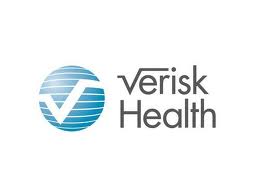Why We Need to Look Beyond Fraud to Contain Healthcare Costs: The Silent Tax of Process Waste
Why we need to look beyond fraud to contain healthcare costs: The silent tax of…
When it comes to containing healthcare costs, there are some obvious areas to target. Everyone agrees that fraud should be detected. Fraud is high profile, and stirs outrage towards those who cheat a system designed to care and heal. Fraud has no constituency—at least not a legitimate one. It’s no surprise that all the major healthcare bills contain some provision about stopping fraud.
While fraud is certainly an apt target for containing costs, there is another equally galling area to target: the one that surrounds administrative or process waste (i.e., inefficiencies in the claims adjudication cycle). Low auto-adjudication rates, pended claims, rejected claims, appeals, and delayed payments all contribute to and are examples of process waste. Process waste affects both payers and providers, and acts as a silent tax on virtually all healthcare transactions.
What causes waste in the adjudication cycle?
There are many small causes, but most can be traced back to a lack of standardization in payment processes and rules―and a lack of transparency throughout the cycle. Payers have different requirements around Current Procedural Code (CPT) usage, different standards around claim acknowledgements, and various payment rules and regulations.
The discrepancies around clinical editing
Healthcare claims are coded to indicate which procedures were performed, and this in turn drives reimbursement. Clinical Editing is the process of checking to make sure that claims were coded correctly. Coding rules are called edits. And there are millions of them, which reflect the complexity of care and treatment. Edits can come from national standards organizations like the American Medical Association (AMA) and Centers for Medicare & Medicaid Services (CMS), or they can be the proprietary rules of a payer or editing vendor.
While there is some degree of standardization with the adoption by many payers of the National Correct Coding Initiative (NCCI) edits published by CMS, those edits are not being uniformly applied. In fact, many payers apply edits differently across their providers, lines of business, or regions.
The benefits for applying edit rules differently are outweighed by the benefits standardization would bring to payers and providers. For payers, the lack of standardization manifests itself in a myriad of miscoded, pended, and rejected claims as well as an increase in customer service calls from providers.
For providers, the lack of standardization in claims editing dramatically increases the complexity of coding compliance. Keeping track of the variation in coding policies among the many payers a provider might submit to significantly taxes coders in provider offices. This lack of standardization contributes to the high costs physician offices spend on administration.
Reducing waste through standardization
Adding to the administrative headache caused by the lack of standards is the opacity of the current system, which results in needless appeals and customer service calls from providers confused by coding rules that are not easily understandable or visible.
Edit information needs to be available and accessible for all participants in the claims cycle. Many appeals occur when a provider does not know why a claim is not paid. Making edit sources open and available to providers through a website or portal can reduce appeals. Thus lessening process waste for both provider and payer staff and increasing trust, which makes for better provider relations.
While it might not be as obvious―or as insidious―as fraud and abuse, the American Medical Association estimated that costs associated with process waste could total as much as $200 billion. Adopting standard clinical editing rules would greatly reduce administration and maintenance for payers while likely increasing auto-adjudication rates. Coding tasks and office work would ease up a bit in provider offices, allowing staff to focus more time and resources on administering care.
The solutions are relatively painless and do not require billions in investment. Investment in technologies that efficiently deploy standards-based processes and facilitate transparency should be the cornerstone of healthcare IT investments. The success of the Electronic Data Interchange (EDI) has proved a valuable tool in driving efficiencies in the claims cycle. Building on this momentum by implementing standards for some of the administrative functions in the adjudication cycle, such as claims editing, can dramatically cut costs and inefficiencies for both payers and providers.
Authored by David Jackson

